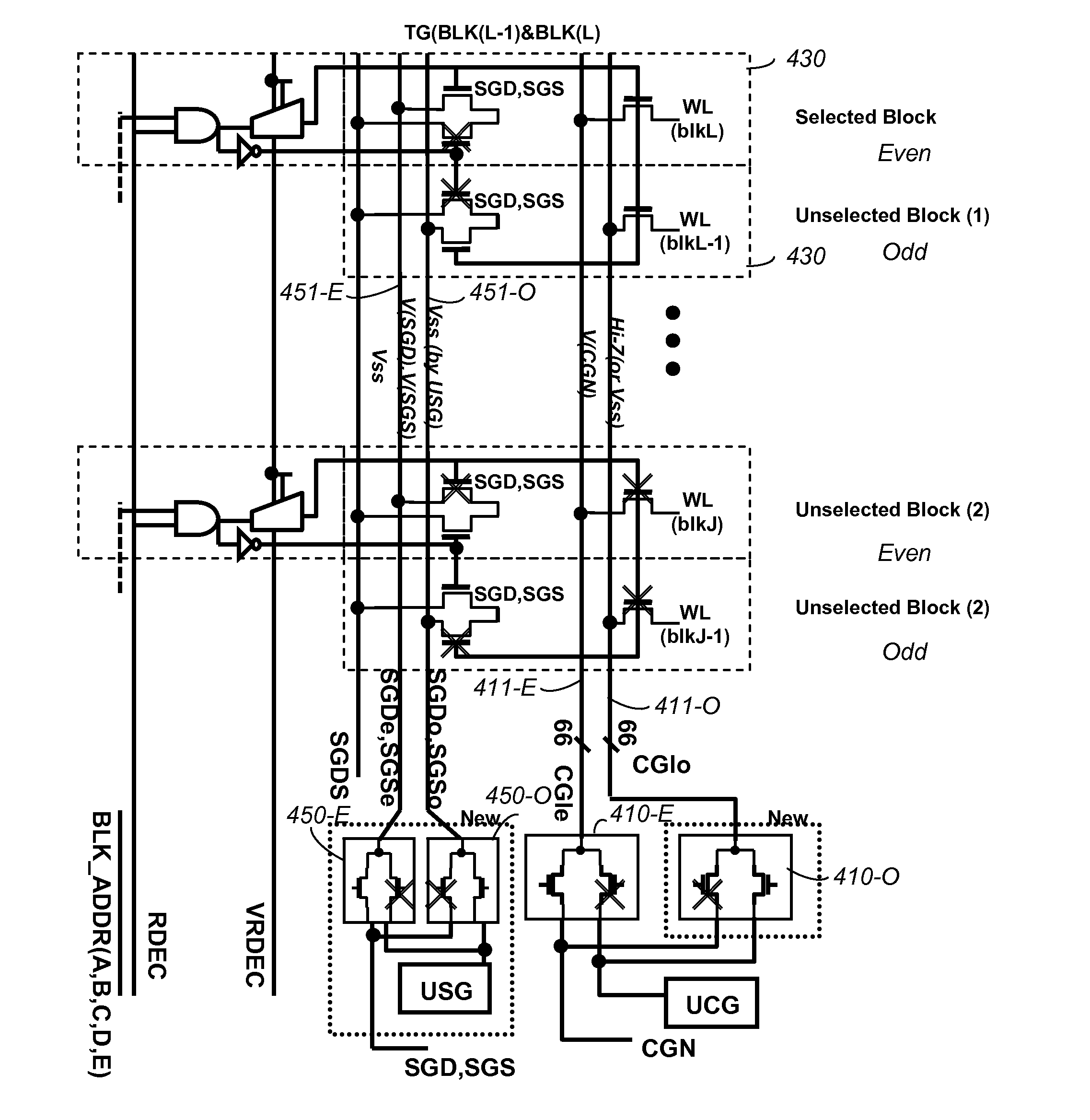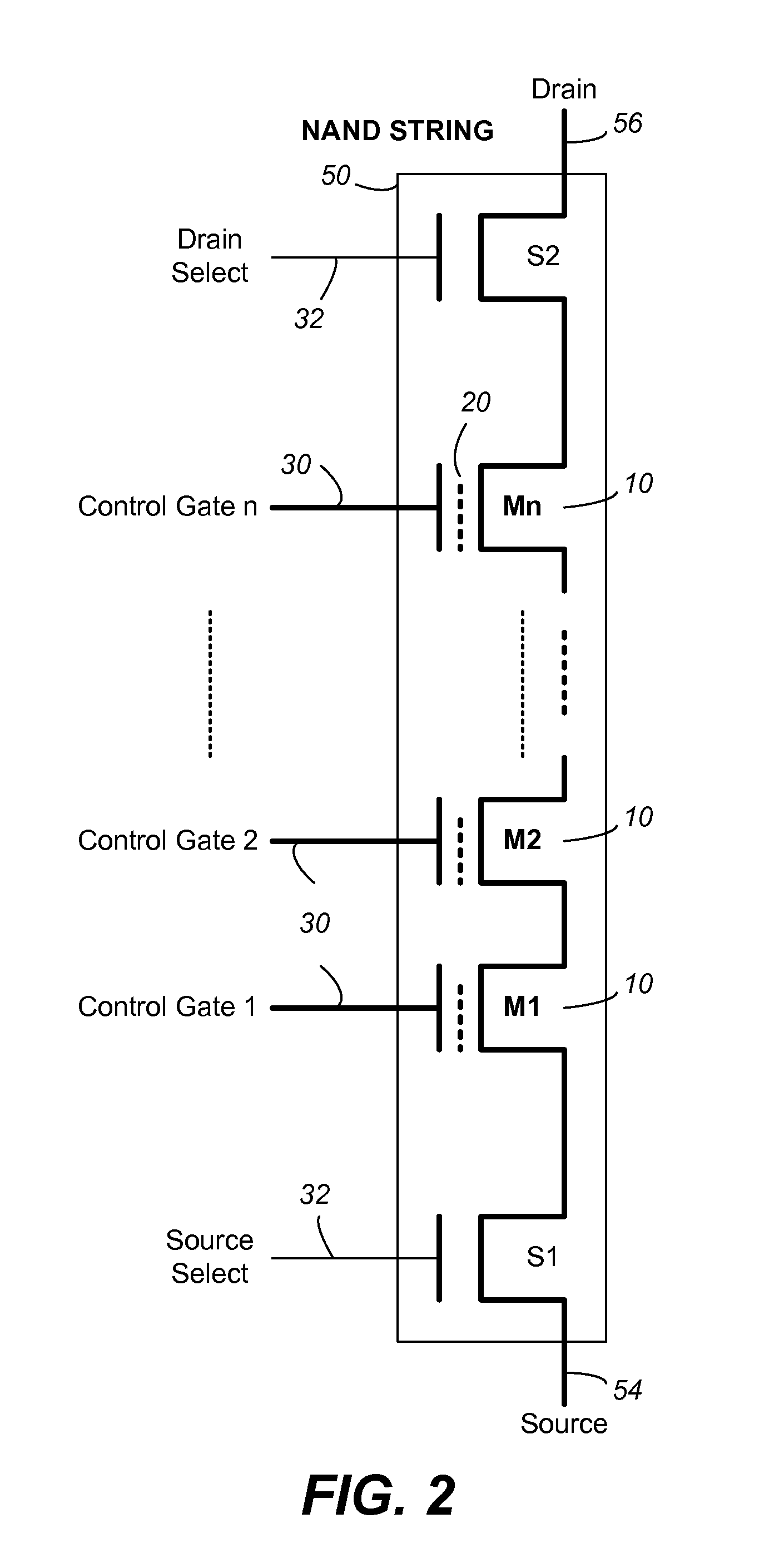Non-volatile memory and method with even/odd combined block decoding
a technology of combined block decoding and non-volatile memory, which is applied in the field of non-volatile semiconductor memory, can solve the problems of large size and net gain in space saving, and achieve the effects of saving space, space saving, and halving the number of decoding circuits
- Summary
- Abstract
- Description
- Claims
- Application Information
AI Technical Summary
Benefits of technology
Problems solved by technology
Method used
Image
Examples
Embodiment Construction
[0030]FIG. 1 illustrates schematically a compact memory device which provides the context in which the present invention is implemented. The memory device 100, usually in the form of a memory chip, includes a two-dimensional array of memory cells 300, control circuitry 210, and read / write circuits 270. The memory array 300 is addressable by word lines via a row decoder 230 and by bit lines via a column decoder 260. The read / write circuits 270 allow a page of memory cells to be read or programmed in parallel.
[0031]The control circuitry 210 cooperates with the read / write circuits 270 to perform memory operations on the memory array 300. It also interfaces with an external host or a memory controller to exchange. The control circuitry 210 includes a state machine 212, an on-chip address decoder 214 and a power control module 216. The state machine 212 provides chip level control of memory operations. The on-chip address decoder 214 provides an address interface between that used by the...
PUM
 Login to View More
Login to View More Abstract
Description
Claims
Application Information
 Login to View More
Login to View More - R&D
- Intellectual Property
- Life Sciences
- Materials
- Tech Scout
- Unparalleled Data Quality
- Higher Quality Content
- 60% Fewer Hallucinations
Browse by: Latest US Patents, China's latest patents, Technical Efficacy Thesaurus, Application Domain, Technology Topic, Popular Technical Reports.
© 2025 PatSnap. All rights reserved.Legal|Privacy policy|Modern Slavery Act Transparency Statement|Sitemap|About US| Contact US: help@patsnap.com



